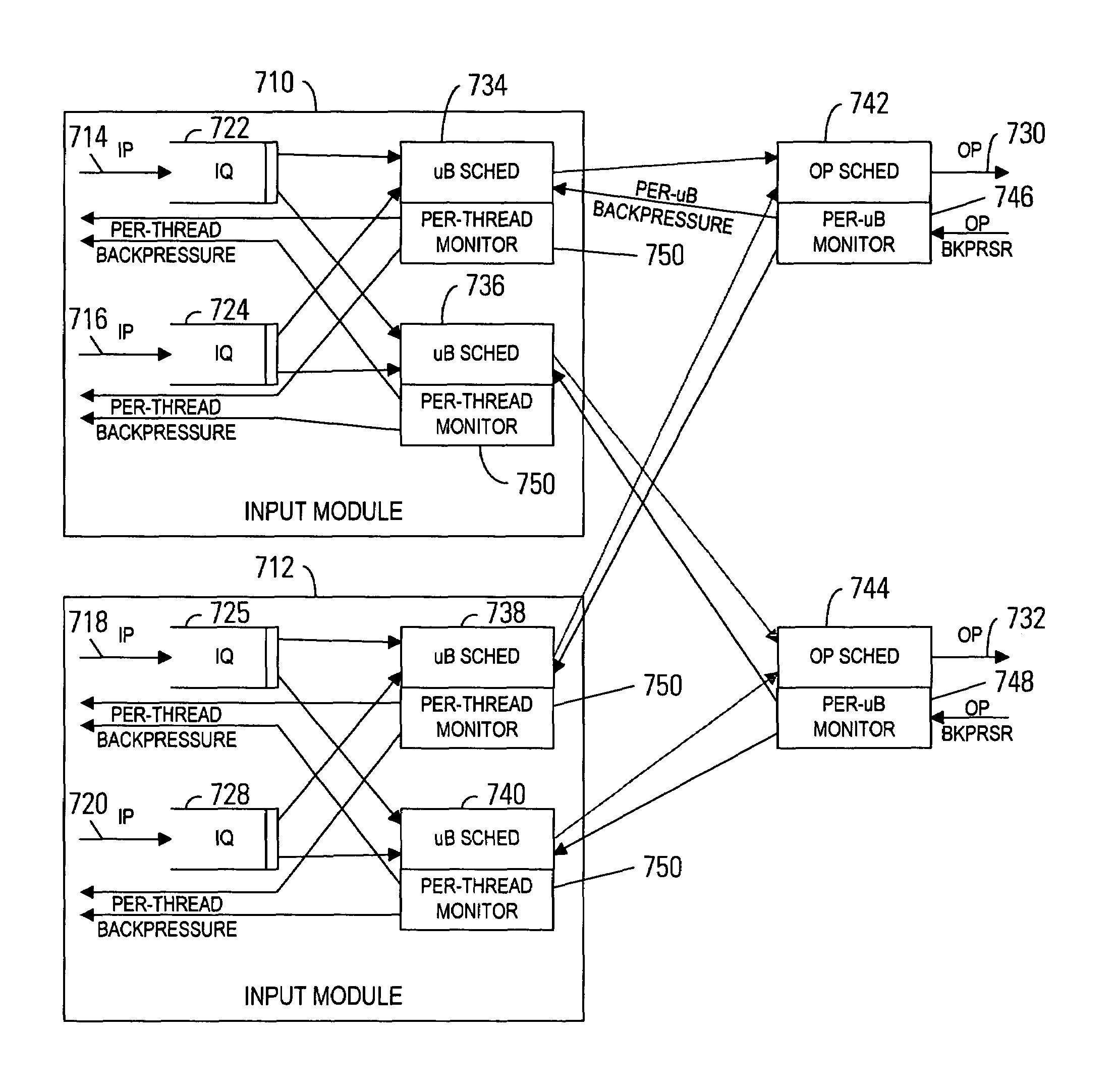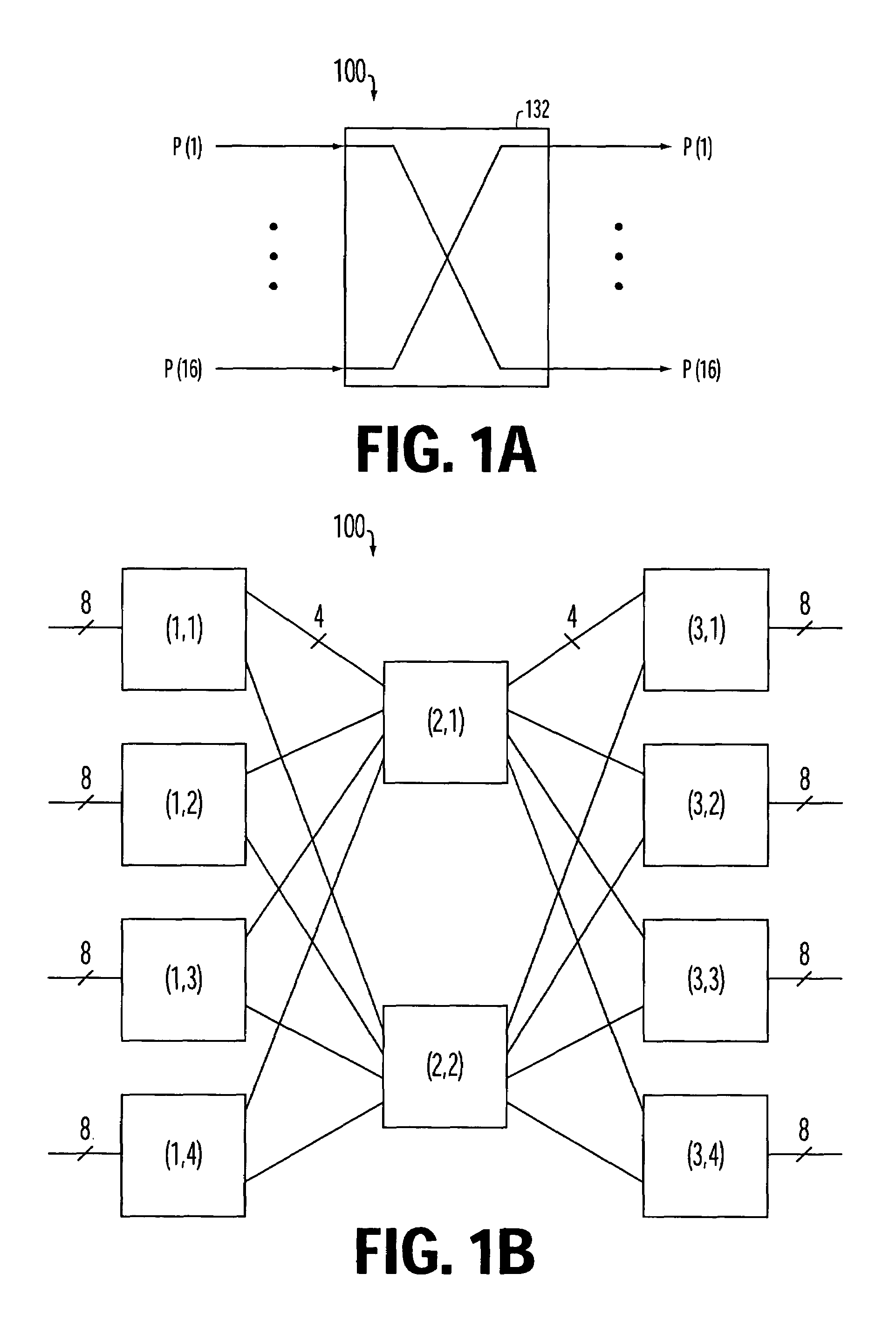Backpressure mechanism for switching fabric
a backpressure mechanism and fabric technology, applied in data switching networks, instruments, frequency-division multiplexes, etc., can solve the problems of counterintuitive use of multi-stage fabric for packet-based switching, reducing control signaling even further, etc., to achieve sufficient internal memory, simplify packet scheduling problems, and reduce complexity. the effect of the packet transmission control mechanism
- Summary
- Abstract
- Description
- Claims
- Application Information
AI Technical Summary
Benefits of technology
Problems solved by technology
Method used
Image
Examples
implementation example — single cashmere embodiment
Implementation Example—Single Cashmere Embodiment
[0133]Implementation details of a single Cashmere embodiment will now be described. In this embodiment, the fabric supports 16 bidirectional interfaces, 3 unicast classes (TS_U, BP_U and BE_U), and 3 multicast classes (TS_M, BP_M and BE_M).
Sharing between Classes, Unicast, and Multicast
[0134]The leaky bucket controller called Data Flow Monitor (DFM) in the device is responsible for monitoring the traffic bound to different outputs. The DFM maintains a set called Output Bucket Set (OBS) of Leaky Buckets (LBs) for each output port. Each set contains 16 Thread LBs (T-LBs) for Best Effort traffic, 16 T-LBs for Bandwidth Provisioned traffic, a single T-LB for all TS traffic, a single T-LB for all BE multicast, a single T-LB for BP multicast traffic, and a single T-LB for all TS multicast traffic bound for the corresponding output port. Each of the T-LBs are filled in proportion to the traffic of each type bound for the corresponding output...
PUM
 Login to View More
Login to View More Abstract
Description
Claims
Application Information
 Login to View More
Login to View More - R&D
- Intellectual Property
- Life Sciences
- Materials
- Tech Scout
- Unparalleled Data Quality
- Higher Quality Content
- 60% Fewer Hallucinations
Browse by: Latest US Patents, China's latest patents, Technical Efficacy Thesaurus, Application Domain, Technology Topic, Popular Technical Reports.
© 2025 PatSnap. All rights reserved.Legal|Privacy policy|Modern Slavery Act Transparency Statement|Sitemap|About US| Contact US: help@patsnap.com



